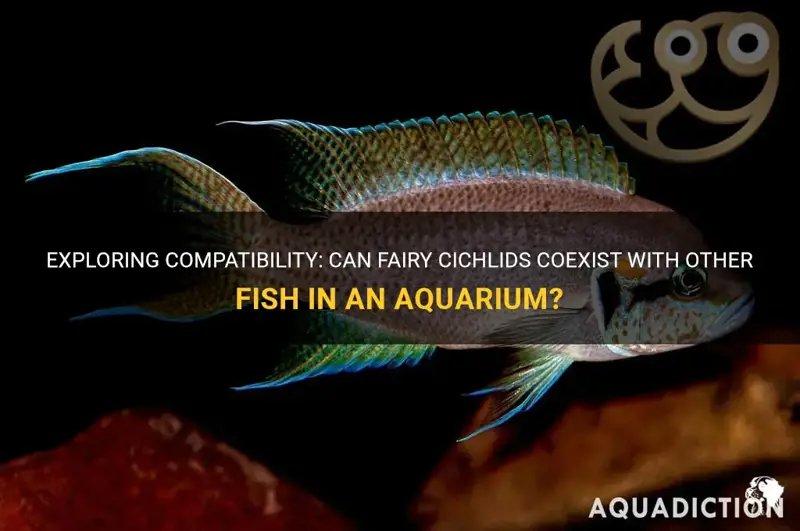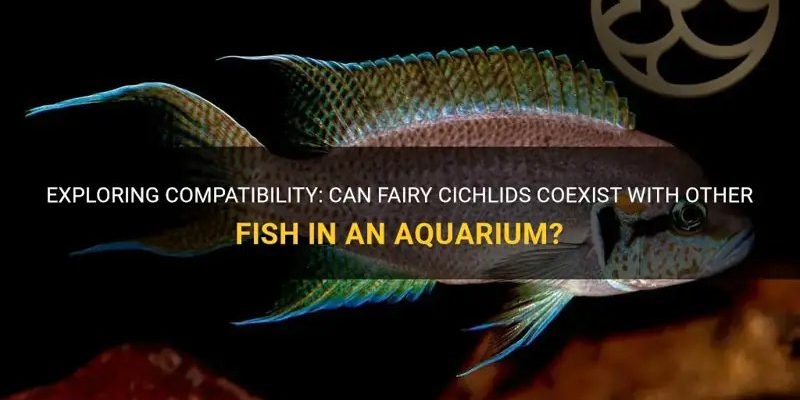
Cichlids are a diverse group of freshwater fish, known for their beautiful colors and unique behaviors. Ranging from the peaceful types to the more aggressive species, finding the right tank mates for them can feel a bit overwhelming. In this guide, we’ll explore how to choose compatible fish for your cichlid aquarium, helping ensure everyone gets along swimmingly.
Understanding Cichlid Behavior
Let’s start by breaking down the fascinating world of cichlid personalities. Cichlids come with a range of temperaments, from the gentle giants you’d love to cuddle (not really, but you get the point) to the fiery fighters who see every other fish as a potential rival. The behavior of your cichlid can significantly influence their compatibility with others in the tank.
Most cichlids are territorial, especially during breeding. This means they might claim a part of the tank as their “home base.” If another fish gets too close, they could be met with flaring gills and aggressive postures as a warning. Understanding this aspect of their behavior is crucial before introducing new fish to the habitat.
On the flip side, some cichlid species are more laid-back and can coexist with smaller, peaceful fish. It’s essential to know which species you have. Popular examples include the *African cichlids* known for their more aggressive nature and the *South American cichlids* that generally tend to be more community-friendly.
Choosing the Right Tank Mates
You might be wondering, “So, what fish can I actually keep with my cichlids?” The answer lies in understanding their needs and behaviors. Generally, if you want to create a harmonious tank, look for fish that are of similar size and temperament.
Here are some compatible options:
- Barbs: Species like the Tiger Barb can be a good match, as they’re fast swimmers and can avoid aggressive cichlids.
- Rainbowfish: Known for their vibrant colors, rainbowfish can add beauty to your tank and usually don’t provoke cichlids.
- Coridoras (Corydoras): These bottom-dwellers are peaceful and tend to stay out of the way of more dominant fish.
However, keep in mind that smaller fish, like tetras, may not be safe around more aggressive cichlids as they could easily be seen as prey. Prioritize the size and resilience of the tank mates you choose.
Setting Up the Right Environment
Creating the perfect environment for your cichlids and their companions is key to ensuring compatibility and harmony. Think of your aquarium as a cozy gathering space: it needs the right decor, proper space, and a suitable atmosphere for everyone to feel at home.
Firstly, consider the tank size; larger tanks give all fish more room to establish territories without feeling overcrowded. For most cichlid species, a tank of at least 30 gallons is recommended, especially if you want to add other fish.
Next, add hiding spots using rocks, caves, and plants. This way, your cichlids can retreat when they need a break or feel threatened. Additionally, maintaining proper water parameters—like pH, temperature, and hardness—will help keep everyone healthy.
Monitoring Fish Health and Behavior
Once you’ve set up the tank and added your cichlids and their companions, the next step is monitoring their interactions closely. Keep an eye on how everyone is behaving in the new environment. Are the cichlids overly aggressive towards their new tank mates? Do the other fish appear stressed or are they thriving?
Here’s the thing: if you notice any signs of fighting or stress, it may be necessary to separate your cichlids from the other fish. Stress can lead to health issues, including disease. Make sure to have a backup plan, like a separate tank, just in case your initial setup doesn’t work out.
Common Compatibility Issues
Even with the best planning, compatibility issues can still arise. Some of the most common problems include aggression, territorial disputes, and size mismatches.
For instance, aggressive displays are often just that—displays. However, if cichlids start actually chasing or nipping at other fish, it’s a clear sign that they’re feeling threatened or stressed. In such cases, you may need to adjust the tank layout or rearrange decorations to break up their territory.
Looking for signs of stress is just as crucial. Fish that are constantly hiding or showing faded colors might not be thriving in the environment. You want to create a lively, colorful aquarium, so any signs of distress should be addressed swiftly.
Incompatible Species to Avoid
Now that you’re familiar with potential tank mates, let’s talk about the fish you should definitely avoid keeping with cichlids. Some species just don’t mix well with these vibrant fish, and knowing which ones to steer clear of can save you a lot of hassle in the long run.
- Goldfish: They thrive in cooler waters and can be bullied by more aggressive cichlids.
- Angelfish: While they can look stunning, they can also be territorial and aggressive, leading to conflicts.
- Small Tetras: As mentioned, these can easily become lunch for hungry cichlids. Stick to larger, more robust fish.
Choosing the wrong tank mates can disrupt the entire ecosystem you’ve worked hard to create. It’s a bit like inviting a friend who doesn’t get along with anyone—chaos can ensue!
Final Thoughts on Cichlid Compatibility
In the end, creating a thriving tank where cichlids live harmoniously with other fish requires a little bit of thought and planning. Understanding the behavior of your cichlids, choosing the right companions, and setting up an accommodating environment are all essential ingredients to success.
Remember, observing your fish after introducing new tank mates is critical. You’re not just creating an environment; you’re curating a little underwater world. With the right knowledge and attention, your aquarium can be a beautiful, peaceful space where all your fish coexist happily.
So, enjoy the journey of building your tank, and don’t hesitate to ask for help when you need it. Fishkeeping is more than just a hobby; it’s a commitment to creating a lively, dynamic habitat. Happy fishkeeping!

